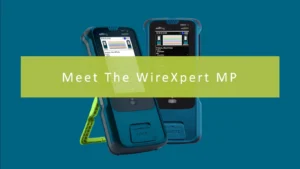And Back to the Edge: Why Edge Computing is Gaining Ground on the Cloud
It wasn’t so long ago that cloud computing was the trending topic as the growth of the wireless industry and new technology implementations led to rapid migration from on-premises data centers to cloud servers. According to a Gartner Forecast study, over a third of organizations consider cloud computing as one of their top three investment priorities.
However, cloud computing isn’t without its limitations. It requires significant bandwidth and struggles with latency, making it challenging to use with sophisticated industrial IoT applications, which require real-time computation.
Enter: Edge Computing.
The next big solution in the computing space is the “edge.”
When you think of the word “edge,” thoughts of the end of an object or place immediately come to mind, like the blade of a knife or cliff of a mountain. In this application, however, the “end” actually means the start.
While cloud computing continues to serve its purpose of storing a computer’s system resources on-demand, its ease of use for performing and relaying data back involves much traversing.
That’s where edge computing comes in, bringing the power of the cloud closer to the customer. Edge computing can be used solo or in addition to cloud, and it provides customers with a boosted network performance, increase in reliability, and often a decrease in costs, thereby solving bandwidth and latency issues.
IT professionals have realized that moving their computational power closer to the edge enables the kind of real-time delivery that is necessary for many industries such as oil and gas, retail, and manufacturing. But – going with cloud, edge, or both will depend on a customer’s needs.
Cloud vs. Edge Computing: Which makes sense?
Like any alternative solution or add on, cloud and edge computing have pros and cons.
For instance, when using wireless, cloud computing may require data, which can get costly, and this is where edge can help. Senior Director of Engineering for Digi International, Ken Bednasz, explained, “The cost of memory is going down; the amount of processing power is increasing tenfold.”
With edge computing significantly growing the last five years, customers can now look at their needs and determine which option makes most sense to help optimize their workflows and processes. Considering factors like data size, time sensitivity, innovation, extra security/privacy, and redundancy are all needs that may push a customer to choose or add on edge.
While some may waffle between the choices, many customers will easily be able to choose based on their compliance and regulatory requirements. Jessie LaCome, principal technical marketing engineer at Dell, explained, “You’ve got heavily regulated environments that will never see the cloud.” This is due to the cloud storing its data ‘out of immediate reach’ from customers, and the edge or more traditional data centers are seen as more secure because of their proximity.
Conversely, those with data intensive applications requiring a lot of storage will want to opt for — at minimum — utilizing the cloud. This could look like supply chain management systems or CRMs where customers or vendors need to interact with a company’s applications. However, CEO of Hivecell, Jeffrey Ricker, and LaCome both warned it could add up quickly due to things like vendor contract lock-ins, data storage, data sent, and time. “The only thing that’s constant in a cloud billing right now is that it goes up every month,” Ricker said.
Clearly, each computing holds its own set of perks, and edge is making data storage even more accessible. However, adding a new platform to the mix isn’t always that easy.
Barriers to Interoperability
Because the edge is relatively new, there will be some expected growing pains. For instance, most systems were built to work with either the cloud or edge, leaving customers with a lack of interoperability. “It tends to cost a lot of money and take a lot of time to actually reconfigure these applications,” said Vice President of Harbor Research, Harry Pascarella.
Clearly, this leads to concerns about variability of the applications being able to easily ‘talk’ to both computing options, which leaves customers wondering about the reliability of the platforms working together. Pascarella advised that knowing the application requirements before adopting a new solution is of utmost importance.
Thankfully, as more customers demand more solutions, the interoperability will inevitably catch up to fully optimize these applications — more devices will become connected and new processes will unfold to help decrease workloads and increase automation.
Why Edge and Why Now?
Much like the cloud before it, edge computing is expected to continue growing at a rapid pace. According to a study from marketsandmarkets, the edge computing market size is expected to grow from 36.5 billion dollars in 2021 to 87.3 billion dollars by 2026, at a compound annual growth rate of 19.0% during the forecast period.
For companies that want to use their IoT data to increase customer satisfaction and efficiency, deploying the edge at scale is necessary to properly work that information. “Raw internet data — IoT data — versus business-relevant data starts at about 400 to one. That means there’s at least 400 bytes of raw data for every byte of meaningful data that you should be pushing to the cloud,” Ricker explained. However, experts want industries who rely on or are looking for edge solutions to recognize that it isn’t a replacement for the cloud, merely a branch of the same tree.
For instance, when the machine learning models are configured properly, having the platform filter out the relevant data at the source and then pushing those figures to the cloud, is where current organizations are winning today in utilizing both computing solutions. Jason Shepherd, VP of Ecosystem at ZEDEDA, said, “The edge is not going to completely replace the cloud by any means… The edge is the last cloud to build. It’s extending the footprint to be more distributed.”
Ultimately, companies already utilizing the edge are seeing major cost savings, increased security, and quicker action.
The challenge for IT professionals moving forward will be to evaluate the strengths and weaknesses of the edge and the cloud and make an informed decision that best meets their particular needs. One thing is clear, though – we’re only on the precipice of growth for the edge.









